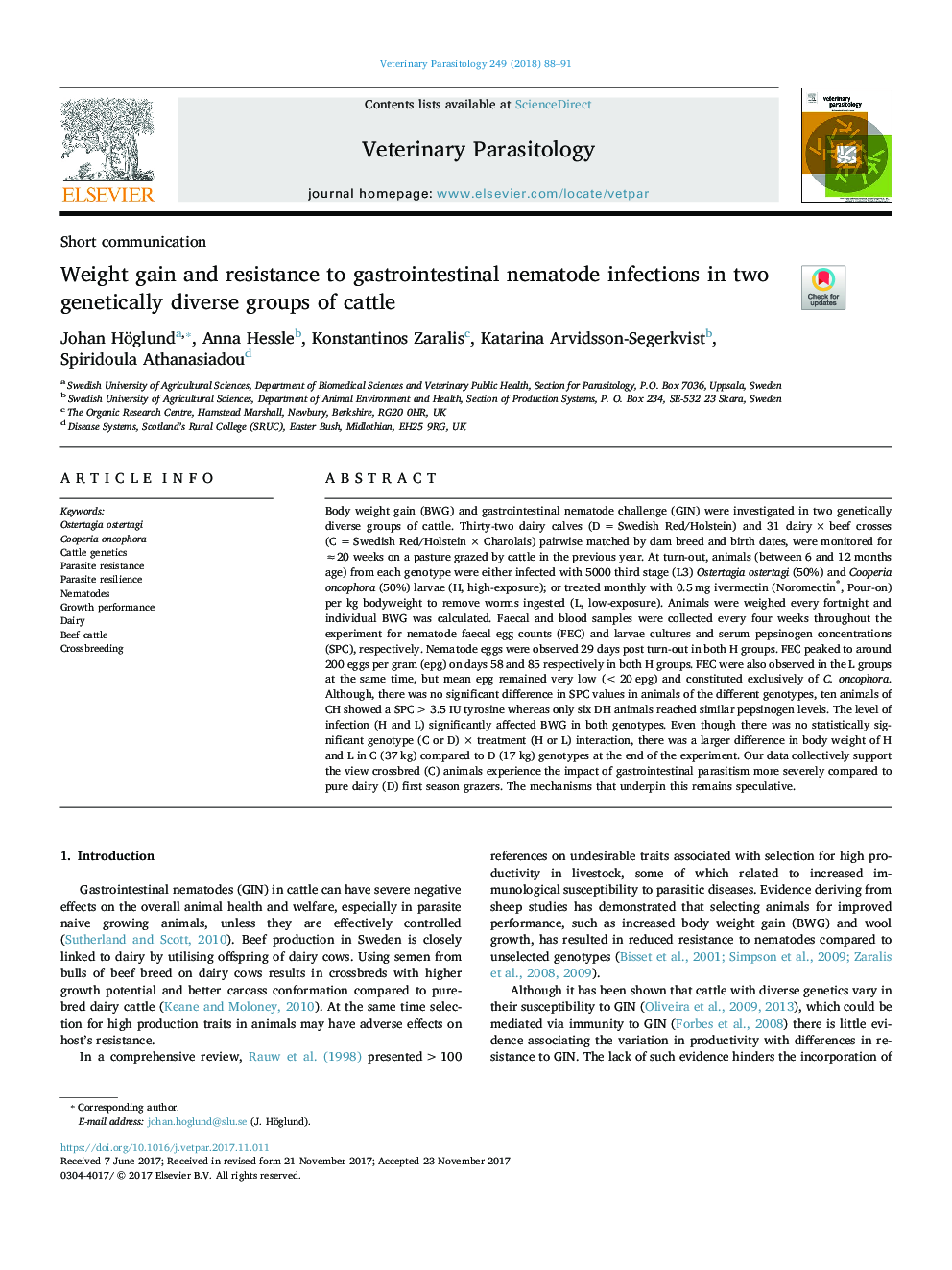| کد مقاله | کد نشریه | سال انتشار | مقاله انگلیسی | نسخه تمام متن |
|---|---|---|---|---|
| 8506180 | 1555627 | 2018 | 4 صفحه PDF | دانلود رایگان |
عنوان انگلیسی مقاله ISI
Weight gain and resistance to gastrointestinal nematode infections in two genetically diverse groups of cattle
ترجمه فارسی عنوان
افزایش وزن و مقاومت به عفونت های نماتد گوارشی در دو گروه ژنتیکی مختلف گاو
دانلود مقاله + سفارش ترجمه
دانلود مقاله ISI انگلیسی
رایگان برای ایرانیان
کلمات کلیدی
موضوعات مرتبط
علوم زیستی و بیوفناوری
علوم کشاورزی و بیولوژیک
علوم دامی و جانورشناسی
چکیده انگلیسی
Body weight gain (BWG) and gastrointestinal nematode challenge (GIN) were investigated in two genetically diverse groups of cattle. Thirty-two dairy calves (D = Swedish Red/Holstein) and 31 dairy Ã beef crosses (C = Swedish Red/Holstein Ã Charolais) pairwise matched by dam breed and birth dates, were monitored for â20 weeks on a pasture grazed by cattle in the previous year. At turn-out, animals (between 6 and 12 months age) from each genotype were either infected with 5000 third stage (L3) Ostertagia ostertagi (50%) and Cooperia oncophora (50%) larvae (H, high-exposure); or treated monthly with 0.5 mg ivermectin (Noromectin®, Pour-on) per kg bodyweight to remove worms ingested (L, low-exposure). Animals were weighed every fortnight and individual BWG was calculated. Faecal and blood samples were collected every four weeks throughout the experiment for nematode faecal egg counts (FEC) and larvae cultures and serum pepsinogen concentrations (SPC), respectively. Nematode eggs were observed 29 days post turn-out in both H groups. FEC peaked to around 200 eggs per gram (epg) on days 58 and 85 respectively in both H groups. FEC were also observed in the L groups at the same time, but mean epg remained very low (<20 epg) and constituted exclusively of C. oncophora. Although, there was no significant difference in SPC values in animals of the different genotypes, ten animals of CH showed a SPC >3.5 IU tyrosine whereas only six DH animals reached similar pepsinogen levels. The level of infection (H and L) significantly affected BWG in both genotypes. Even though there was no statistically significant genotype (C or D) Ã treatment (H or L) interaction, there was a larger difference in body weight of H and L in C (37 kg) compared to D (17 kg) genotypes at the end of the experiment. Our data collectively support the view crossbred (C) animals experience the impact of gastrointestinal parasitism more severely compared to pure dairy (D) first season grazers. The mechanisms that underpin this remains speculative.
ناشر
Database: Elsevier - ScienceDirect (ساینس دایرکت)
Journal: Veterinary Parasitology - Volume 249, 15 January 2018, Pages 88-91
Journal: Veterinary Parasitology - Volume 249, 15 January 2018, Pages 88-91
نویسندگان
Johan Höglund, Anna Hessle, Konstantinos Zaralis, Katarina Arvidsson-Segerkvist, Spiridoula Athanasiadou,
